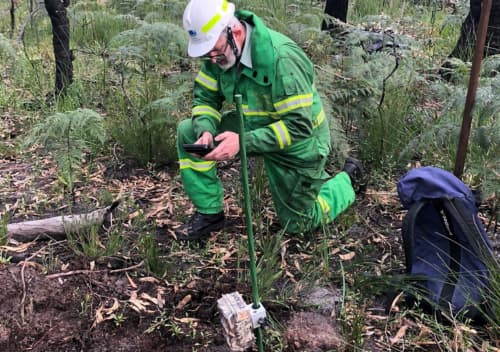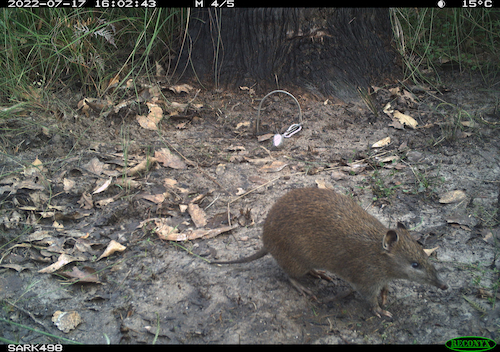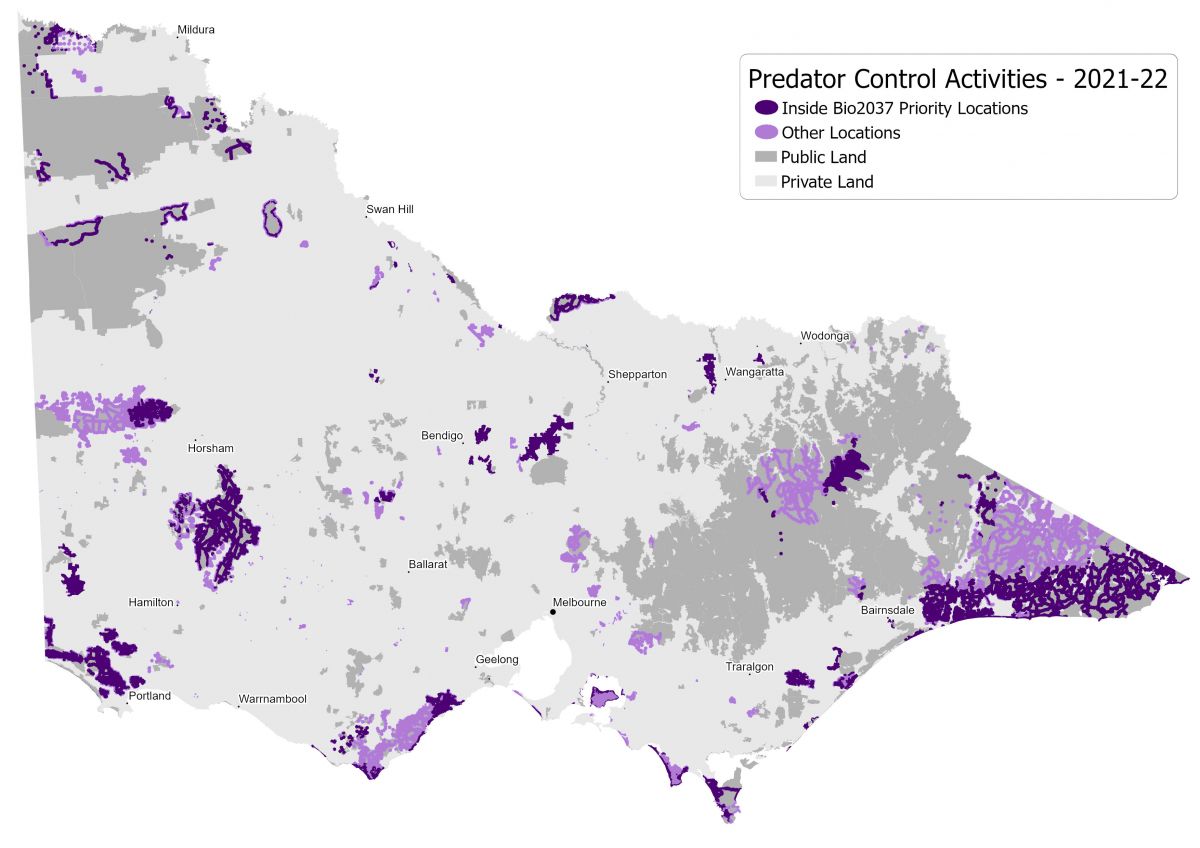Pest predator control achievements in 2021–22
- Over 1.8 million hectares of fox and feral cat control completed in 2021-22 – an area almost twice the size of Greater Melbourne
- We partnered with Traditional Owners to deliver pest predator control and post-fire recovery works
- Our ‘Ark’ projects – Glenelg, Grampians and Southern - are landscape-scale, multi-partner projects to reduce fox numbers across large areas of the state, to benefit wide ranges of native mammals, birds and reptiles.

Left: Setting up field cameras in east Gippsland to detect native animals and pest species

Right: A Southern Brown Bandicoot captured on a field camera
Reducing fox numbers in East Gippsland to protect native fauna
Far East Gippsland is a hotspot for native animals – many of which are rare or extinct in other parts of Victoria.
These include the Long-footed Potoroo, Long-nosed Bandicoot and Southern Brown Bandicoot.
The European red fox is a significant predator for these marsupials. Foxes also prey on livestock and have the potential to spread exotic diseases.
To combat these problems, our Southern Ark project is reducing the fox population across 1 million hectares of land.
Funded by our Weeds and Pests on Public Land program, the research, baiting and monitoring project started in 1995 and covers state forest, national parks and private land across the entire eastern wedge of Victoria, from the Snowy River Valley to Cape Howe.
Recent success includes completion of broad-scale camera monitoring, where cameras were deployed for a 35-day period across 693 sites.
This was the second full survey of Southern Ark sites since the 2019–20 bushfires, repeating a similar survey carried out in 2021.
In 2022, Long-footed Potoroos were detected at 259 sites, indicating a strong recovery post-fire. Other species displaying promising recoveries were long-nosed bandicoots and Southern Brown Bandicoots.
Overall, this monitoring shows that populations of a wide range of mammal, bird and reptile species are recovering well post-fire (and post-drought that preceded the fires), which can be attributed to sustained fox control.
The Southern Ark project is delivered by DEECA in partnership with Parks Victoria, Trust for Nature, Moogji Aboriginal Council, Gunaikurnai Land and Waters Aboriginal Corporation, Field Naturalists Club of Victoria, Deakin University, Gippsland Intrepid Landcare and Far East Victoria Landcare.
Predator control activities

Figure: 2021-22 activity data, pest predator control
Pest predator control
- Foxes
- Feral cats
Annual target: 1.5 million hectares in Biodiversity 2037 priority locations
Table: Area (hectares) of pest predator control across Victoria for 2018-19 to 2021-22
| Annual progress* | 2018-19 | 2019-20 | 2020-21 | 2021-22 |
|---|---|---|---|---|
| Priority locations (ha) | 823,735 | 865,328 | 1,042,706 | 923,168 |
| Other locations (ha) | 1,092,497 | 1,239,892 | 1,130,012 | 896,134 |
| Statewide total (ha) | 1,916,232 | 2,105,220 | 2,172,718 | 1,819,302 |
*These progress figures are a compilation of data from organisations across the environment sector. While the Victorian Government is a major contributor to this work, many of the projects from which this data is derived are undertaken by others.
Recent program announcements by the Victorian Government will continue to drive progress toward this target. This includes $32 million for 36 large-scale conservation projects across Victoria announced in 2022 and 2023 under the Protecting Biodiversity Program.
Page last updated: 13/08/24